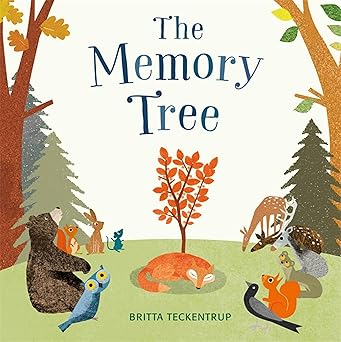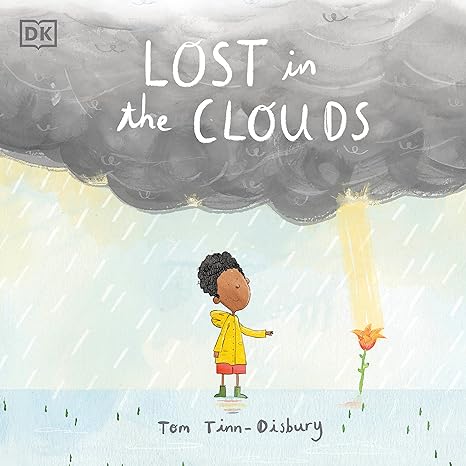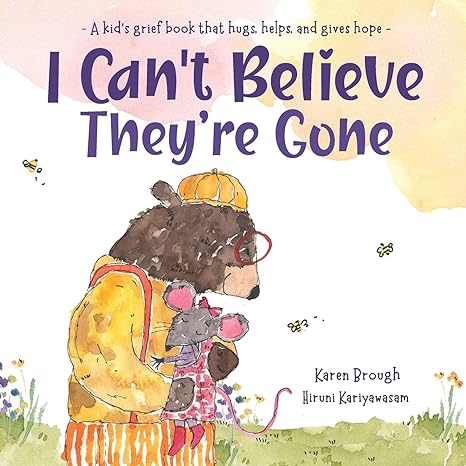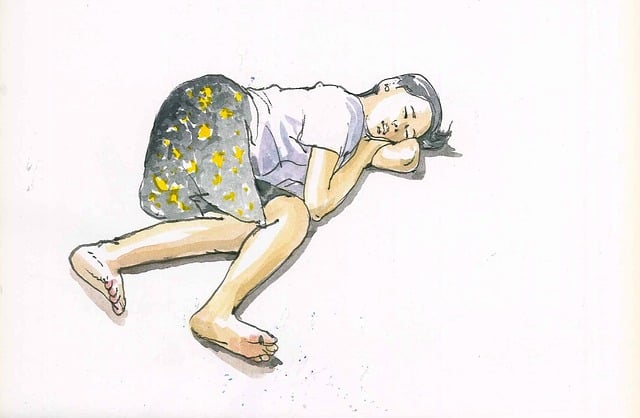Knowing how to survive tantrums or meltdowns can be invaluable throughout your child’s early years.
If you have a child over one you will probably have experienced the drama and emotional distress that comes when your sweet child transfers into a mini hulk.
Of course, if one happens at home it’s hard. However, if you are unfortunate enough to be out in public when meltdowns or tantrums come, though you know you will survive, it can be mortifying.
Tantrums and meltdowns are never fun. We can more than survive, however. In the messy moments, we can connect with our children and help them thrive.
The difference between a tantrum and a meltdown
Many people use the words tantrum and meltdown interchangeably. Are they the same thing?
There is no clinical definition of either a tantrum or meltdown, although many agree on differences.
For simplicity, throughout this post, when I talk about a meltdown it is when your child has lost all control. When I speak about tantrums, they still can act with purpose, although they may need support with emotional regulation. (Nannery and Nannery, 2021)
One small note. There is sometimes the assumption that only children who are neurodivergent can have meltdowns. Meltdowns can indeed be more regular and intense for neurodivergent children. However, neurotypical children and adults can also have meltdowns.
Now we have looked at the difference between meltdowns and tantrums, lets discuss how to survive them.
How to survive tantrums and meltdowns
There are steps you can take to make tantrums and meltdowns less painful for both you and child.
Step 1. Before it begins
The best cure for most things is prevention. Unfortunately, children have big emotions they which they cannot always understand or control.
Once a child turns five, they can begin to regulate some of their emotions. As with adults, if they are hungry, tired or just overwhelmed this might be hard. (Rouse, 2016)
Younger children will have less emotional control. They are also less advanced in speech and communication. Therefore they may struggle to let adults know what they want or need. (Stanford Medicine Children’s Health, 2019)
You cannot stop all tantrums and meltdowns. Yet you may be able to avoid some by understanding your child and predicting their needs.
Hunger and Tiredness
I will be the first to admit that when I am hungry or tired I can be cranky. I don’t think I am the adult for whom that is true. It is even more true for children.
Ensuring that your child has enough sleep can help limit tantrums and meltdowns. Keeping regular mealtimes, and carrying snacks for between meals is also important.
Unpredictability and lack of control
As adults, we are likely to enter most days with some sort of idea of what will happen. Throughout the day we have freedom in what we do, where we go etc. Children often don’t have the same luxury.
Even if we tell our children plans ahead of time, their perception of time is still developing and they might not understand or remember what is happening when. They will also have limited control over many of the happenings. As adults, this would be hard to handle. It is understandable why sometimes children struggle.
There are things that you can do to help. Picture boards showing children the order of the day can help them orientate themselves. Keep talking about what is next as this is a concept that they will understand at a younger age, rather than ‘this evening’, or ‘tomorrow lunchtime.”
Interactive routine charts are a great tool. They help engage the child and give them an element of control. Sometimes, letting them make little choices can also help.
Disconnection
Connection is a human need. There is a growing amount of research proofing that are biological built to socialise and connect with other humans. (Braren, 2023) This means that connecting with your child throughout the day is imperative.
Modern life is busy. We often rush from place to place, tackling to-do lists and other people’s demands. In quieter moments, the temptation to bury our heads in our phones is sometimes too great to resist.
Throughout this, our children are carried from place to place. They may feel like they are an additional burden that we are trying to manage. A little connection can go a long way.
Children love to help. Try giving them a job alongside you. This can involve them and help them feel part of what is happening. It might be something little. If you are running errands, ask them to tick the errands off as you complete them. If you are cleaning they can wipe skirtings or window sills.
It is hard, but try to make time, away from the busyness, to be with your children. No phones. No distractions. You and them
If children have a strong bond with their grown-ups, it can help them to understand and learn to control their emotions. (Department for Education, 2022) Hopefully that will mean less meltdowns.
They struggle to handle ‘no’
The part of a child’s brain which handles things, like impulse control, delayed gratification and critical thinking is often called the ‘upstairs brain.’ It is not fully developed until the 20’s. Adults, with our fully developed brains, don’t like to hear ‘no’. It is no wonder that children struggle. If you want to read more about the upstairs and downstairs brain, here is a great article.
So should we give children everything that they ask for? Definitely not. We can, however, offer the word ‘no,’ with empathy and perspective.
Empathy can be shown with phrases like, ‘I know you are frustrated that you can’t play longer,’ or ‘I know you are disappointed that you can’t have cake.’ This helps your child to feel seen, and also shows them how to label and understand their emotions.
Perspective can also help. Children live in the now. If they are told ‘no’ it might feel like ‘no’ is forever. It can help to reword a ‘no’ to a ‘not yet.’ For example, ‘We can’t buy that cake today. Would you like it next month as your birthday cake?’ Or, ‘We aren’t buying toys today. Do you want me to take a photo of that, and you can save up your pocket money to come back?
Of course, sometimes ‘no’ just means ‘no.’ In time, with help, our children will learn to handle them.
Other reasons
Many other factors can also be in play. Pay attention to if your child has a tantrum or meltdown during specific times or in specific locations. Look for what might be causing it. If your child can talk, ask them if there is anything that is upsetting them. (“Kids Learning to Tell Time: When Do Kids Learn to Tell Time? How Do Kids Learn about Time?”, 2024)
Step 2. What’s that coming over the hill?
Your child may go from sweet and kind to a full-on rage monster in a flash. You will not always see a tantrum or a meltdown coming.
Step one will not always work, as you cannot prevent all tantrums and meltdowns. This step, may not work either. Sometimes you cannot predict a messy moment.
If you can, however, acting preemptively will help you to survive the tantrums or meltdowns when they arrive.
Perhaps you are in a grocery store, and your child is begging for a treat. You notice their repetitive demands are getting louder and more emotive. A tantrum is coming.
You could stop it by giving in and buying them the treat. This is the easy way out. One I am sure we have all taken. I know that I have. It is not the best way. Children should not get their way by throwing tantrums. They need to learn to solve problems and communicate without screaming or crying.
So, you may need to weather the tantrum. If you see one coming heed the signs.
If you want to survive tantrums and meltdowns with minimal damage, you need to prepare.
Firstly, take steps to ensure you can give your child your full attention. If you are out of the house, this may mean excusing yourself from a conversation or stashing your shopping cart to the side. At home, it could be ensuring siblings are occupied and safe, or switching a pan off if you are in the middle of cooking.
In a crowded place, find somewhere quiet. Tantrums and meltdowns are easier, and pass faster, if you do not have an audience.
Step 3. Bring your calm to the storm
When the tantrum or meltdown starts, there is very little that you can do to stop it. Those big feelings are there and need to be let out.
Let your child tell you what is wrong, and continue gently enforcing those boundaries. For some children, labelling how they feel may help. Hold strong.
The hardest part during this step is acceptance. No one wants to sit for ten minutes with an angry child who doesn’t want to put on the school uniform. I promise you, however, that taking the time to sit with your little one will get you out the door a lot faster than trying to wrestle clothes onto their squirming body and then carrying them kicking and screaming down the road.
During this time, if we are calm it will help our little one find calm too.
What if I don’t have time?
When children are young, it helps to leave ten minutes of grace time for moments like this. Sometimes you may be late. Take a big breath. It will not be the end of the world. When this is over you will be able to handle the aftermath.
So I just sit there? Isn’t there anything I can do or say to make it go faster?
In their messiest moments, children care often unable to listen to reason.
We spoke a bit earlier about the upstairs and downstairs brain. The downstairs brain is impulsive, reactive and in control of fight or flight.
When a child is angry or scared, a part of the brain called the ‘amygdala’ gives full control to the downstairs brain. In the days of our ancestors, this would have been important for survival. The downstairs brain is faster and geared to self-preservation. Unfortunately, it means your child can’t engage in pragmatic dialogue until the upper brain is back in control. (Mine Conkbayir, 2023)
So, a lot of this time is waiting. Use non-aggressive body language and ensure your child doesn’t hurt anyone or break anything. Hold your peace, and know that this messy moment will pass.
Don’t yell
Tantrums are hard on parents. It is natural to feel angry and frustrated. This frustration leads some parents to try to yell their children into submission.
Unfortunately, yelling at a child will increase their stress and fear, keeping them in fight or flight mode.
If you need to, walking away is always a better option than yelling.
A little hack
If child’s upper brain isn’t kick in, there are things that you can do to help.
It is unlikely that in the middle of a messy moment, you will get your child to talk about the situation they are raging against. They may, however, engage on other topics.
Ask them what they remember from a story they know, facts about an animal. If they are old enough to do basic maths, say a sum wrong and let them correct you. The upper brain is needed for reasoning or remembering tasks, and it may well help it to take the lead again.
Once you have their upstairs brains back engaged, you may be able to talk calmly about the situation at hand.
Step 4. Coming back together
When the raging is finished you can start to connect again with your child.
This is the point where you can talk to them, and help them understand appropriate behaviour and expectations.
Keep any lessons short and move on.
Giving something is not giving in
Sometimes little things can help a child feel seen. There are often creative ways that you can help a little one feel that their needs are being met.
For example, if they are angry that they have to go to school, suggest doing something fun together at the weekend. Maybe they want a toy, and you can come up with a way for them to do chores to earn money to buy it. For those who are reluctant to don their school uniform, they may enjoy choosing clothes to wear when they get back home.
Being little is hard. Our children have so much to learn and many things are out of their control. A little kindness is never a bad idea.
Step 5. Moving forwards
Should you punish a tantrum?
I have heard the argument, ‘If you don’t punish a tantrum, they will keep doing it.’ I don’t believe that is true. Most children will not find throwing a tantrum pleasant or dignifying. A meltdown even less so. They are likely to come out feeling embarrassed and a little shaken.
Furthermore, these big feelings are often out of your child’s control.
I do not advocate punishing a tantrum. If, however, throughout the tantrum, your child has made a mess, they can tidy it. If they have hurt someone or broken something it is right that they make amends.
Positive consequences
The lessons that we teach our little ones throughout their childhood are likely to form how they face life as adults.
Therefore, a good measure when looking at the consequences we give, is ‘Would I want them to do this to themselves when they are grown up.’
For example, if your best friend said she had messed up and so wasn’t going on the spa day she had booked, because she didn’t deserve it you would think she was crazy.
If however, the same friend realised that she had been over-emotional recently and decided to have some early nights and try to watch her sugar, you would likely commend her.
Punishment for the sake of punishment will not benefit your child. When you discipline your child try to think about if you are hurting them or helping them. For example, if your child is struggling to control their emotions things like limiting screen so they spend more time connecting with family, limiting sugar and prioritising sleep are all things that can help. It is, of course, unlikely that your child will love any of these initiatives. They may view them as punishments. You will know, however, that you are acting in your child’s best interest. For more about the difference between punishment and discipline check out this article.
A final note
Whilst tantrums and meltdowns are not pleasant, you will survive. As your child grows they will likely learn how to control those big emotions, and there will be less messy moments.
Until then, remember that if you want to be a place of calm for your little one, it is imperative to look after yourself.
I wish you all the peace,
Hannah Louise
References
Braren, Stephen. “The Evolution of Social Connection as a Basic Human Need.” Social Creatures, 24 May 2023, www.thesocialcreatures.org/thecreaturetimes/evolution-of-social-connection. Accessed 27 Jan. 2025.
Department for Education. “Help for Early Years Providers : Emotions.” Help-For-Early-Years-Providers.education.gov.uk, 6 Sept. 2022, help-for-early-years-providers.education.gov.uk/areas-of-learning/personal-social-and-emotional-development/emotions. Accessed 28 Jan. 2025.
Go, Kids That. “The Upstairs and Downstairs of the Brain: Part One – Kids That Go.” Kids That Go, 8 May 2020, kidsthatgo.com/upstairs-and-downstairs-brain-part-one/?srsltid=AfmBOorPMktgYr-YqBX14Sbd7w2WFroEI2H0SWbZ9hHN3s5Rcjnd-pR_. Accessed 28 Jan. 2025.
Jones, Gareth. “Tantrum or Autism Meltdown?” Experia, 3 Aug. 2023, www.experia.co.uk/blog/7-differences-between-tantrums-and-autism-meltdowns/.
“Kids Learning to Tell Time: When Do Kids Learn to Tell Time? How Do Kids Learn about Time?” BBC Tiny Happy People, 2024, www.bbc.co.uk/tiny-happy-people/articles/z3g3cxs. Accessed 27 Jan. 2025.
Miller, Caroline. “Why Do Kids Have Tantrums and Meltdowns?” Child Mind Institute, Child Mind Institute, 25 Feb. 2016, childmind.org/article/why-do-kids-have-tantrums-and-meltdowns/. Accessed 27 Jan. 2025.
Mine Conkbayir. “Neuroscience: Understand the “Upstairs” and “Downstairs” Brain – Nursery World.” Nursery World, 27 Apr. 2023, www.nurseryworld.co.uk/content/features/neuroscience-understand-the-upstairs-and-downstairs-brain/.
Morin, Amanda . “The Difference between Tantrums and Meltdowns.” Www.understood.org, www.understood.org/en/articles/the-difference-between-tantrums-and-meltdowns.
Nannery, Sarah, and Lance Nannery. “What Is the Difference between a Meltdown and a Tantrum?” Psychology Today, 2021, www.psychologytoday.com/gb/blog/what-to-say-next/202105/what-is-the-difference-between-a-meltdown-and-a-tantrum. Accessed 27 Jan. 2025.
Reeck, Crystal, et al. “The Social Regulation of Emotion: An Integrative, Cross-Disciplinary Model.” Trends in Cognitive Sciences, vol. 20, no. 1, Jan. 2016, pp. 47–63, https://doi.org/10.1016/j.tics.2015.09.003.
Rouse, Matthew. “How Can We Help Kids with Self-Regulation?” Child Mind Institute, 2016, childmind.org/article/can-help-kids-self-regulation/. Accessed 27 Jan. 2025.
Schilling, Elizabeth. “Temper Tantrums (for Parents) – Nemours KidsHealth.” Kidshealth.org, 2018, kidshealth.org/en/parents/tantrums.html. Accessed 27 Jan. 2025.
Stanford Medicine Children’s Health. “Age-Appropriate Speech and Language Milestones.” Stanfordchildrens.org, 2019, www.stanfordchildrens.org/en/topic/default?id=age-appropriate-speech-and-language-milestones-90-P02170. Accessed 27 Jan. 2025.
Tao, Ting, et al. “Development of Self-Control in Children Aged 3 to 9 Years: Perspective from a Dual-Systems Model.” Scientific Reports, vol. 4, no. 1, 11 Dec. 2014, www.ncbi.nlm.nih.gov/pmc/articles/PMC5377018/, https://doi.org/10.1038/srep07272.
“The Difference between Meltdowns & Tantrums – Autism Treatment Center.” Autism Treatment Center of America, autismtreatmentcenter.org/knowledge-base/the-difference-between-meltdowns-and-tantrums/.
Twito, Louise, et al. “The Motivational Aspect of Children’s Delayed Gratification: Values and Decision Making in Middle Childhood.” Frontiers in Psychology, vol. 10, no. 1649, 31 July 2019, https://doi.org/10.3389/fpsyg.2019.01649.
When to Worry about Toddler Temper Tantrums. www.hopkinsmedicine.org/health/wellness-and-prevention/babies-and-toddlers-discipline/when-to-worry-about-toddler-temper-tantrums.





